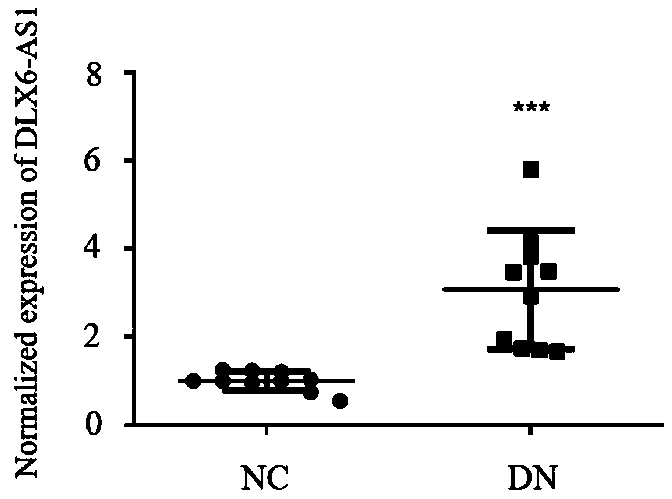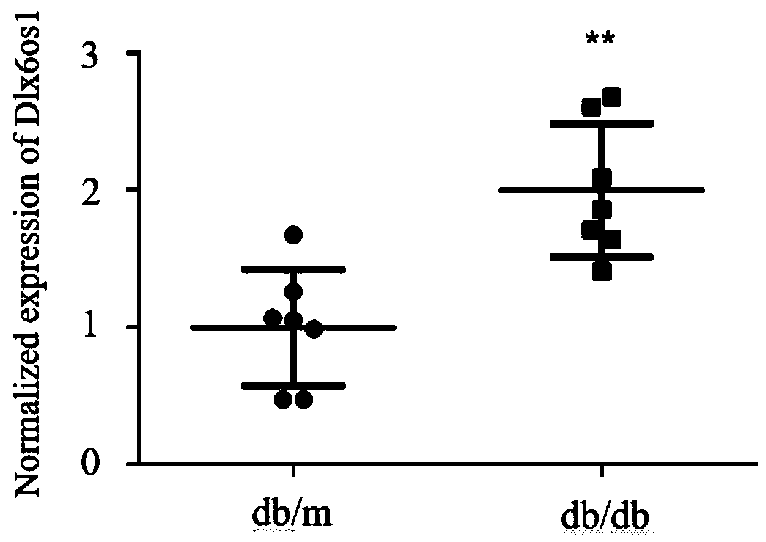Breeding method for transgenic mouse with conditional knockout of lncRNA DLX6-os1
A technology of lncrnadlx6-os1 and dlx6-os1, applied in the field of medical biology, can solve the problems of low virus infection efficiency, low virus titer, long lncRNA sequence, etc., achieve significant economic and social benefits, wide application range, strong use value Effect
- Summary
- Abstract
- Description
- Claims
- Application Information
AI Technical Summary
Problems solved by technology
Method used
Image
Examples
Embodiment Construction
[0021] The specific implementation of the present invention will be described in detail below in combination with specific situations.
[0022] In the specific implementation of the present invention, a breeding method for conditionally knocking out lncRNA DLX6-os1 transgenic mice is carried out by genetically modifying C57 mice through genetic engineering technology to construct FLOX-DLX6-os1 transgenic mice. It can be crossed with a variety of transgenic mice with cre enzymes in different organs to obtain mice with reduced expression levels of DLX6-os1 in different organs. The specific breeding method includes the following steps:
[0023] 1. Build the carrier
[0024] In order to create a mouse Dlx6-os1 conditional knockout model in C57BL / 6 mice, first construct the Dlx6-os1 conditional knockout vector, Dlx6-os1 gene, transcript: Dlx6os1-201 ENSMUST00000159568.5, located on mouse chromosome 6 The three exons on the above three exons are used as the conditional knockout reg...
PUM
 Login to View More
Login to View More Abstract
Description
Claims
Application Information
 Login to View More
Login to View More - R&D
- Intellectual Property
- Life Sciences
- Materials
- Tech Scout
- Unparalleled Data Quality
- Higher Quality Content
- 60% Fewer Hallucinations
Browse by: Latest US Patents, China's latest patents, Technical Efficacy Thesaurus, Application Domain, Technology Topic, Popular Technical Reports.
© 2025 PatSnap. All rights reserved.Legal|Privacy policy|Modern Slavery Act Transparency Statement|Sitemap|About US| Contact US: help@patsnap.com



